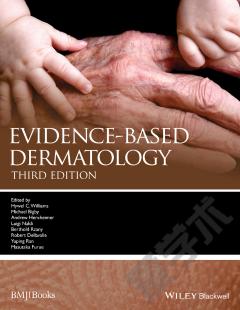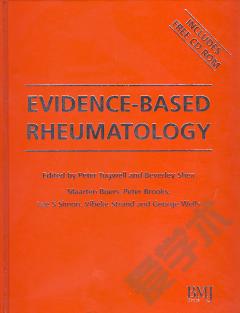Evidence-Based Dermatology
Williams, Bigby, Diepgen, Herxheimer, Naldi, and Rzany have produced an exciting new book. A wide international group of dermatoepidemiologists that was involved in writing the 54 chapters is acknowledged. The book, which is accompanied by a CD-ROM, is divided into 4 partsâpart 1, the concept of evidence-based dermatology; part 2, the critical appraisal toolbox; part 3, the evidence; and part 4, the future of evidence-based dermatology. Evidence-based medicine represents the best way of linking and integrating clinical research with clinical practice. Evidence-based dermatology does not tell dermatologists what to do, but practicing evidence-based medicine is an essential skill that is as basic to being a doctor as the ability to examine and diagnose as formulated by Williams in chapter 2. The excellent part 1 discusses the definitions and concepts of evidence-based dermatology and also addresses the role of consumers. What doctors consider to be the most important outcome measurements in studies is not always in agreement with what patients (socalled consumers) think of their disease. Consumers are, therefore, very important and can help professionals to improve health care and health care research in several ways. Part 1 also provides information about the Cochrane Skin Group, which group is one of about 50 Collaborative Review Groups that together make up the Cochrane Collaboration. Part 2, which is also excellent, explains step-by-step in a clear way the basics of practicing evidencebased dermatology. The process starts with asking an answerable structured question that may be generated from a patient encounter. The next steps are how one can search for the best evidence, how this evidence should be appraised, and how bias can be avoided. These steps are followed by extracting data and, if possible, by pooling data. Finally, the evidence can be applied back to the patient. Part 3 gives examples of evidence-based dermatology in different skin diseases and is subdivided into 8 sections consisting of common inflammatory diseases, skin cancer, infectious skin diseases, infestations, disorders of pigmentation, hair problems, leg ulcerations, and less common skin diseases. It is astonishing to realize that there is often very little evidence for many of our treatments for common skin diseases. The quality of the different chapters varies, with very good chapters intermingled by chapters of a lower quality. It is a pity that in some chapters only PubMed and no other databases were searched since it is known that, for example, the overlap with Embase is around 35%. In the otherwise wellwritten chapter on acne vulgaris we missed a discussion about the evidence of treatment with oral isotretinoin for patients with more severe disease. Although a thorough search has been performed on the treatment of hand eczema, no choice for an optimal topical steroid schedule could be derived. Specifically, the chapter on atopic eczema was extensive and addressed many questions that are very relevant. It was nice to see that the section on skin cancer included chapters on prevention and reduction of skin cancer as well. The section on less common skin disorders included important skin diseases such as bullous skin diseases, chronic discoid lupus erythematosus, and dermatomyositis, and, hopefully, new chapters will be added on the Web site, eg, lichen sclerosis et atroficans, folliculitis decalvans, and granuloma annulare. In part 4 the limitations of evidence-based dermatology are discussed as well as âwhere do we go from here.â The text used in the book is easy to read and the tables, figures, and boxes with key points are clear and illustrative. The fact that the book is accompanied by a Web site for additional chapters and updates is a real bonus. In summary, we believe that this textbook is an important new edition for all physicians who are practicing dermatology and who would like to know more about how to integrate oneâs clinical expertise with the best external evidence from systematic research. In short, Evidence-Based Dermatology is a âmustâ for all those persons who want to know more about evidence-based dermatology!
{{comment.content}}








 京公网安备 11010802027623号
京公网安备 11010802027623号